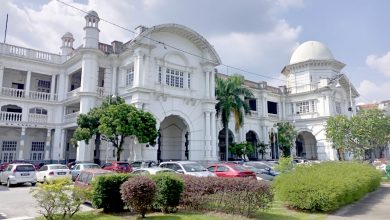Based on the global higher education ranking system, six of our 20 public universities are graded while the other 14 failed to get recognition. They are Universiti Malaya (70), Universiti Putra Malaysia (159), UKM (160), USM (165), UTM (217) and Universiti Utara (591-600).
What then is the standard of the remaining 14 public universities that have failed to get recognition in the global higher education ranking system?
The unranked universities include International Islamic Universiti, UM Kelantan, UM Pahang, UM Perlis, UM Sabah, UM Sarawak, UM Terengganu, Universiti Pendidikan Sultan Idris, Universiti Pertahanan, Islamic Science Universiti, Universiti Sultan Zainal Abidin, Universiti Teknikal Melaka, Universiti Tun Hussein Onn and Universiti Teknologi MARA.
Besides the 20 public universities, there are many private institutions. In fact, there are more university places than students. To get more students to make money, they have to lower the entry standards. As a result, both public and private universities are producing a lot of low-grade graduates.
According to the Ministry of Education’s publication, Quick Facts 2018, we have a tertiary student enrolment of 538,555 as of Dec 31, 2017. The top six ranked universities account for about 180,000 students meaning that over 350,000 students are enrolled and will be graduating from the 14 public universities. Besides these future graduates from public universities, there will be another few hundred thousand from private universities.
Not well known is that there are 165,000 students alone in the exclusively Malay/Bumiputra Universiti Teknologi Mara (UiTM).
Data on public universities shows that the majority were set up after 1990. If we assume a total of 100,000 graduates produced annually since the NEP’s end, this could mean that our higher education system has produced more than 3 million graduates with possibly 2.5 million from the Malay community; and perhaps one million from UiTM.
This output of higher degree certificated manpower during such a short time is not only a staggering achievement. It is possibly unprecedented in the world.
On the basis of paper qualifications, Malaysia may have the most degree holders per capita in Asia if not the world.
Managing the country is like managing thousands of commercial businesses, companies and conglomerates. What can we expect when Malaysia is managed by thousands of low-grade graduates?
Why Malaysia is still not a developed nation?
In 1970 when the new economic policy (NEP) was introduced, our GDP per capita was about the same as Singapore, Taiwan and South Korea. Currently, Singapore, Taiwan and South Korea are 4, 3 and 2.5 times our GDP per capita, respectively. They are already classified as fully developed nations.
While we were once the biggest producer of tin, rubber and palm oil in the world. Moreover, we have petroleum as a bonus.
In 2012 I wrote and published my book namely “Malaysia: Road Map to achieving Vision 2020 and I have given Nga Kor Ming 100 copies for distribution.
The fastest way to Vision 2020 is to practise meritocracy.
I wish to suggest that the Pakatan Government practises meritocracy in the selection of students to enter public universities so that we can produce higher grade graduates. I would also like to suggest that the Government practises meritocracy in the selection of employees for promotion so that our civil service can manage our country more efficiently.
Besides the above elaborated from his article, I have also received Dr Lim Teck Ghee’s permission to extract the following from his article “Now everybody has a degree” which was published in the latest Sun Daily.
Quote “It is an achievement which politicians and policy makers intent on continuing the New Economic Policy ad infinitum do not seem to be aware of. Or if they are, it appears to be one that they do not want to discuss or make widely known.
This crisis raises questions about the course of higher education that our political leaders and education bureaucracy will find difficult to answer. However, it is one which needs to be addressed sooner rather than later.
The public sector higher education crisis is multidimensional and goes well beyond the concerns over plagiarism and other corrupt practices.
It includes aspects related to quality of education, unemployability, absence of meritocracy, lack of academic freedom, low teaching and research standards, staff demoralisation, governance shortcomings, alleged promotions based on political connections, increased incidence of outsourced work and cheque book academia.
Perhaps the most worrying aspect is that the higher education production train cannot be held back or stopped. It will continue to produce larger numbers of graduates in the coming years. One estimate is that the number of post-secondary students will double from 1.2 million to 2.5 million in the short period from 2012 and 2025, with the majority expected to come from the B40 category.
How can the economy and society meet the expectations of the millions of students, mainly Malays – many deferring employment opportunities and having to use up family savings or borrowing from PTPTN to finance their way to earning qualifications ill suited to meet the demands of a bloated civil service and a saturated employment market – is a ticking time bomb.
The nation needs a Royal Commission of Inquiry to address this subject immediately. The RCI’s terms of reference will have to be the reforms needed over the spectrum of the nation’s post-secondary educational system, including the universities, to rescue it from the impending train wreck.” Unquote.
Koon Yew Yin


